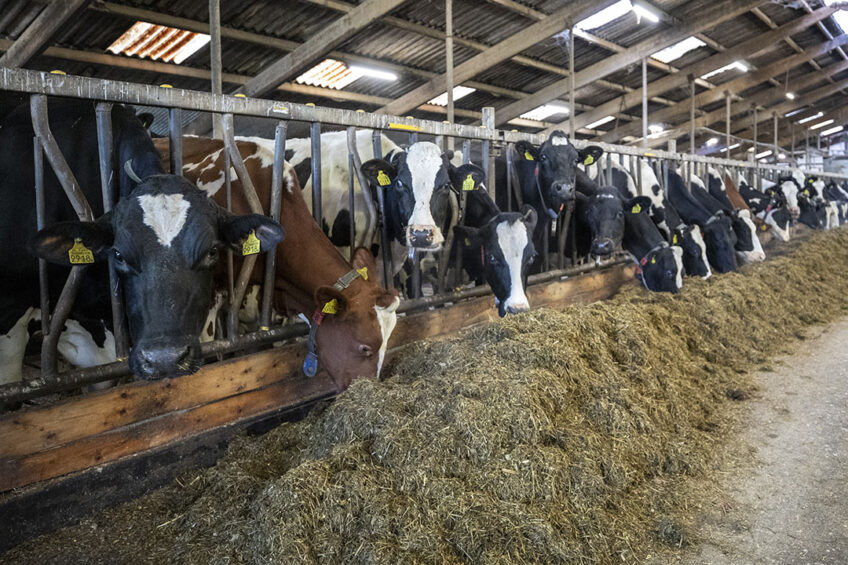Find out why a mysterious monolith was taken down from a Colorado dairy farm after attracting large crowds. Was it a publicity stunt or something else? Read more.

The arrival of an enigmatic monolith recently brought the calm scene of a Colorado dairy farm to the forefront and attracted interested observers. This odd occurrence set off public interest, property conflicts, and conjecture regarding the monument’s background and intent. The audience was fascinated by the towering, glossy, rectangular item, which agricultural laborers finally took down. Come experience the arrival and removal of the monolith with us and its effects on the neighborhood.
The Enigmatic Beacon of Bellvue: An Astonishing Arrival
Rising roughly ten feet tall and four feet broad, the monolith was a bright, metallic item. The Bellvue neighborhood beside Morning Fresh Dairy Farm saw its shining polished surface in the sun. Found on June 26, some 70 miles north of Denver, the monolith was securely attached to a concrete foundation, implying a well-planned installation.
A Community Enchanted: Social Media Buzz and Public Speculation
The unexpected arrival of the monolith sparked a wave of public interest and speculation. Social media platforms buzzed with ideas and jokes about the structure’s mysterious origins. One user quipped, “Looks like the aliens have a taste for dairy now. What’s next, interplanetary cheese?” This lighthearted speculation was echoed by many others, who questioned whether the monolith was an elaborate marketing ploy.
On-site observers were instrumental in shaping the community’s fascination. One tourist shared with 9NEWS, “It couldn’t have just appeared out of nowhere. Someone must have spent a lot of time setting it up, but why here?” Another observer remarked, “The whole thing feels like a scene from a sci-fi movie. It’s bizarre.” This sense of wonder permeated the community, adding to the intrigue of the situation.
Conversations on the farm’s Facebook page combined appreciation with fun. One post I came onto was, “Your dairy products ARE out of this world!” Another said sarcastically, “I want to see those welds. Aliens are far more capable.
Among the doubters, one said, “It’s 100% a PR gimmick. What do you suppose placed it first if it requires a loader to take down? This made others think about the pragmatic consequences of the location of the monolith.
Driven by curiosity and the will to be part of a confusing phenomenon turning their town into a viral sensation, many locals and guests entered the adjacent Howling Cow Cafe. Combining lighthearted banter, natural curiosity, and critical doubt, they created an image of a society and an online audience struggling with a contemporary riddle.
The Whirlwind of Curiosity: A Community Abuzz with Theories
The monolith’s unexpected arrival in Bellvue created a wave of local and tourist conjecture and inquiry. Ideas about its beginnings abound on social media. “Within 30 minutes of my arrival… a team and forklift appeared to unbolt the monolith and haul it away,” one observer said to 9NEWS. Online comments varied in tone from dubious to funny. One user laughed, “Your dairy goods ARE out of this world!” while another taunted, “I want to see those welds. Aliens are far superior to us. Some suspected a PR hoax, challenging, “If it takes a loader to take it down, what do you think put it up in the first place?” The mystery turned Colorado’s field into a focal point of world interest.
The Crescendo of Public Interest: From Disruption to Decisive Action
The proprietors of Morning Fresh Dairy Farm saw the growing public interest and visitors flood. Crowds gathered, creating disturbances and safety issues even if they begged observers to remain on the road and respect private property.
Given this developing problem, the property owners intervened. They said on Wednesday that “The Monolith” had been taken down and is now in safekeeping. Safety issues and the sheer volume of tourists drove their choice. They also asked the inventor to take back the item.
Witnesses said a crew effectively unbolted and removed the monolith using a tractor and forklift early in the morning. This meticulous procedure revealed the farm’s quick reaction to the unforeseen circumstances.
A Plea to the Creator: Monolith Removed for Operational Tranquility
On social media, the Morning Fresh Dairy Farm said the monolith had been pulled down and secured. Citing too many visits because it was removed, they asked the creator to email them to regain it.
Theories Abound: Artistic Enigma or Strategic Stunt?
The monolith’s unexpected arrival at Morning Fresh Dairy Farm has spurred several ideas concerning its source. It may be an art installation, maybe connected to such recent constructions. Some art buffs relate it to Stanley Kubrick’s 2001: A Space Odyssey’s monolith or Richard Serra’s works.
Others conjecture it may be a PR trick by the dairy farm, pointing to its location close to a well-traveled region and the ensuing media interest. This point of view contends that such a coordinated event may increase local tourism and interest in the farm’s offerings—including the Howling Cow Cafe.
More fanciful ideas point to alien participation based on the monolith’s unearthly form and perfect state. Though lacking data, some theories appeal to the obsession with UFOs by suggesting the monolith as a beacon or message from another culture.
Arguments still rage about the monolith’s actual character. Unquestionably, an avant-garde work of art, a savvy marketing tactic, or a mystery treasure has enthralled the community and spurred intense interest.
The Bottom Line
The sudden appearance and subsequent removal of the monolith at Morning Fresh Dairy Farm underscore the unexpected nature of such occurrences. This enigmatic structure, blending art, mystery, and community reaction, captivated viewers and sparked social media discussions. Its proximity to Bellvue sparked a range of theories, from extraterrestrial involvement to artistic projects. However, the influx of visitors prompted a swift response from the farm’s owners to protect their property. Recognizing the intrigue, they carefully removed the monolith and invited its creator to reclaim it. This incident highlights the delicate balance between public interest and private property, and the unforeseen ways art can intersect with everyday life. The brief presence of the monolith underscores our fascination with the unknown and the importance of respect and inquiry, whether in art or publicity stunts, and their impact on society.
Key Takeaways:
- The monolith appeared on Morning Fresh Dairy Farm, about 70 miles north of Denver, on June 26.
- Its sudden presence caused a stir, drawing crowds to the farm and disrupting normal operations.
- The farm owners requested onlookers to view the object from the road, but many intruded onto the property.
- The monolith was unbolted and removed with the help of a tractor and forklift on a subsequent morning.
- Morning Fresh Dairy Farm has made a public offer for the creator to reclaim the object by contacting them.
- Speculation remains rife regarding its origins, with theories ranging from an art installation to a marketing stunt.
- Despite the chaos, some online users praised the farm’s produce, humorously suggesting extraterrestrial involvement.
Summary:
The discovery of a mysterious monolith in Colorado’s Bellvue neighborhood has sparked public interest, property conflicts, and speculation about its origin and intent. The monolith, securely attached to a concrete foundation, was a well-planned installation. The public’s response was mixed, with some questioning if it was an intelligent marketing trick. On-site observers helped develop ideas, and discussions on the farm’s Facebook page combined appreciation with fun. Some doubters claimed it was a PR gimmick. Morning Fresh Dairy Farm owners noticed the growing public interest and visitors flooding, creating disturbances and safety issues. They intervened, removing the monolith early in the morning. The monolith’s actual character remains a topic of debate, with some suggesting it as an avant-garde work of art, a savvy marketing tactic, or a mystery treasure.













